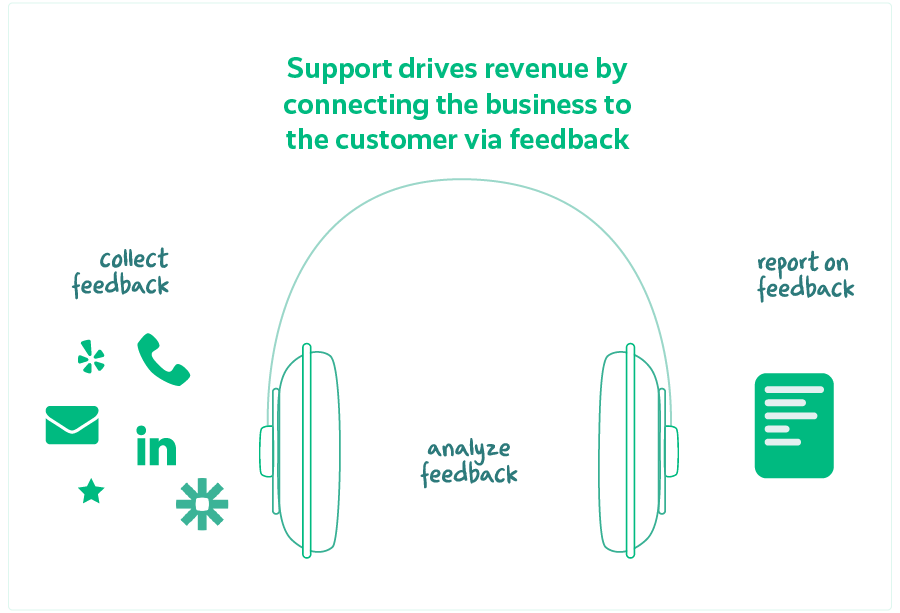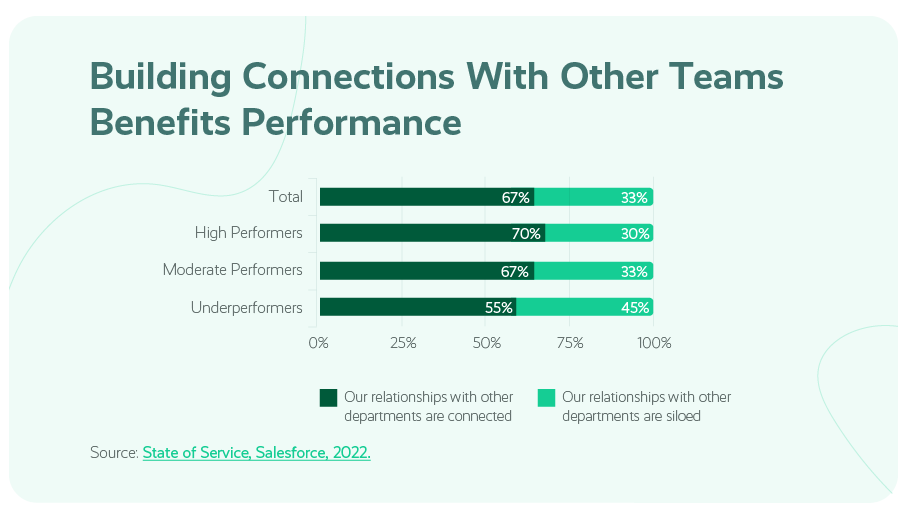Get Your Customer Support Team the Respect it Deserves
Customer support teams can get a bad rap — people in other departments may think your team is just a cost center within your business or that it’s not as crucial as other teams. But as a contact center leader, you play a big role in breaking down these stereotypes.
Your team is one of the most important teams in your business because you have a direct line to customers, their concerns, and their insights. Your customers are counting on you to make your voice heard within the larger business — because it’s their voice, too.

Your Customer Service Team Matters
If you and your team feel you don’t matter as much to the business as other departments, it’s time to put a stop to that notion.
Lilith Antunovic, customer experience manager at Rentman, found herself experiencing this issue throughout her career — so she set out to change the view of customer service teams within the community.
“One of the biggest challenges I had in the very beginning was making sure the entire company realized that, yes, support costs money, but is also the key to keeping customers,” Antunovic said.
Your team can make the difference between a happy customer and an unhappy one — even if the customer has an issue with the product itself. A 2022 Salesforce report showed that 88% of both consumers and business buyers said their experience mattered as much as a company’s products did, making your team a critical part of the customer experience — and customer retention.
Beyond creating successful customer relationships, customer support teams also have a big impact on revenue. Salesforce reports that 48% of customers have left a brand for better customer service elsewhere, and 94% say good customer service makes them more likely to buy again. Your team also builds revenue through cross-selling and upselling.

Empower your customer support teams to recognize the vital role you all play in the larger business by:
- Ensuring service team members can attend company roundtables or town halls to share their input about customer expectations and needs
- Regularly sharing the praise that customer support agents receive within the team and with the company at large
- Making them feel valued with the right incentives, like the option to work remotely
Related Article: 5 Proven Strategies To Help Remote Contact Center Agents Feel Valued
Showcase Your Customer Support Team Progress
Show your leadership and your peers in other departments the impact your team makes by backing up your claims with solid data points. What are customers’ expectations from your company? What are they unhappy about? What do they like most?
You’re probably using tags to track customer feedback, but without the right reporting, you might find yourself struggling to gather customer insights from the wealth of unstructured data and present them in a way that shows their effect on the business.
Good reporting relies on the right tagging structure. When you’re tagging customer feedback in an organized way, the most pressing issues reveal themselves faster, and you can take them to the right team to address quickly.
Sometimes, the issue associated with the most tickets isn’t really the one that’s causing the most trouble for your business. That’s why Jeffrey Laird, president and chief compliance officer at Stockpile, has come up with what he calls the Customer Pain Index to prioritize fixes.
While his index takes ticket volume into account, it also includes the time it would take to fix the problem and the ability of the frontline team to resolve it. Combined, these three measures allow Stockpile to prioritize easy wins with high impact.
Related Article: How Support Tagging Boosts Product-Support Collaboration
Add Qualitative Insights
Be careful not to rely solely on your data to get things done. To inspire action from other teams, you have to be a good storyteller as well.
Studies have shown that narratives are easier for non-experts to understand than data alone — stories give data flavor and meaning that make it easier to grasp. Stories also generate more engagement and interest from the listener, so harness the power of storytelling when presenting your data to others in your company.
Imagine saying this at a meeting with your product team:
“Sixty-four percent of our prospects are interested in a monthly billing option instead of an annual option. Can we add that?” That’s a lot of users, but the data statement doesn’t deliver much of a punch on its own.
Instead, what if you said:
“Molly is the head of marketing at her company, but her budget is tight post-pandemic. She can’t justify a large annual spend like our solution right now, but she told our agent that if there was a monthly option, she could make the purchase work with what she has left for this fiscal year. In fact, our tagging data shows us that 64% of our prospects are interested in a monthly billing option. Can we make that happen?”
Couching your request within the framework of an actual user and her real pain points will make your request more meaningful — especially when you put it in the context of money.
Related Podcast: Support Ticket Tagging: How Automation Turns Data Into Action
Demonstrate the Impact on the Bottom Line
Going to an internal meeting with a feature request and some customer satisfaction stats isn’t likely to garner much attention. While those numbers can provide a window into customer sentiment, there’s no story there. And it misses the metric most executives jump to address: revenue.
Instead, frame urgent issues from the perspective of the financial impact on the company. Valeria Kast, head of merchant support at Printify, found categorizing issues by volume and income from the impacted customers helped her connect those issues to company revenue.
“When we started to quantify and explain that if nothing changes and we keep growing like we do, then we will need this headcount calculation in three separate offices to support the product with our team, even at the best possible efficiency. And obviously, that is very expensive,” Kast said.
Before your next internal meeting, prioritize your feature requests and issues by first asking yourself a few questions about each one:
- How rapidly are cases increasing?
- How much revenue is at stake?
- What are the consequences if we delay a fix — or don’t fix it at all?
Related Article: 3 Tips For Optimizing Your Contact Center Schedule
Build Bridges Across Teams
You catch more flies with honey than vinegar, so becoming known as a team leader who’s always complaining and asking for help — versus helping out others — won’t get you very far.
The Salesforce State of Service report shows that the best-performing customer service centers have connected relationships with other departments. Breaking down silos and working together as a customer-centric company is an important part of providing an exceptional customer experience.

When everyone in the company is working toward the same big goal, it’s easier to connect, get things done faster, and make an amazing customer impact. Again, storytelling plays a crucial role, according to Stockpile’s Laird.
“Don’t say, ‘Add this feature and make more revenue.’ Instead, turn the focus of the story onto other teams. Talking to marketing? Try, ‘This feature is a differentiator,’” he noted.
Other examples of Laird’s tactic include:
- Showing how a feature that cuts back on rote, repeated customer interactions will leave more funds for another team
- Sharing with marketing how a feature that users find delightful might elevate the brand
- Demonstrating to product development how addressing a bug now can eliminate future requests from your team
Related Article: 9 Ways a Collaborative Culture Benefits Your Contact Center
Make Your Customer Support Team’s Voice Heard
Your customer support team plays a crucial role in the success of your business. You have a vital line of communication with customers that other departments don’t. When you use your voice to amplify your customers’ voices as well, you help drive your entire business forward.
Read more about standing up for your CX team in our ebook, Voice of Support: 10 Support Leaders Weigh In On How To Be Heard. In it, industry support leaders share their inside tips and tricks on how to get your team the attention they need from other areas of your business.







